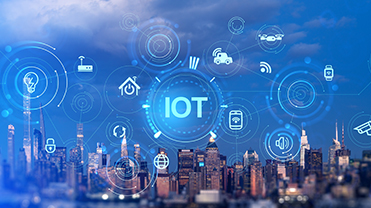A technological revolution is taking place in modern buildings today. While the earlier focus was around improvements in construction materials, today responsive human-centric design drives innovation. We spend 90% of our lives indoors. Imagine a world where the buildings and spaces that you occupy adapted themselves to your needs. What would that world look like?
No more frustrating hunts to find a parking space, the smart building would guide you to it. It’s okay to forget your swipe card at home, elevators will not ask for it anymore as your face will be automatically recognized. The building will care for you and go to the extent of automatically closing the blinds if the heat and sun rays passing through the windows start bothering you.
Leading the shift towards such human-centric responsive buildings are a trio of forces:
– Post-COVID-19, occupants seek improved wellness and expect robust safety measures
– Owners want to increase employee productivity through more comfortable spaces
– Operators need to reduce cost through energy-efficient technology
Powered by the Internet of Things (IoT), four major technology trends are pushing buildings to become more responsive to the needs of humans.
Contactless interactions
With the staggering loss of life and the ensuing paranoia around the COVID-19 pandemic, safely bringing people back to the workplace is a priority for governments and employers alike. Using voice-activated devices and iris scanners, companies can keep their security protocols in place without creating queues at security counters or swiping touchpoints.
A leading elevator manufacturer has introduced a functionality that allows people to call elevators using their smartphones. Another innovator in the smart elevator industry is experimenting with touchless elevators as the future of its product range. It has taken functionality to the next level by aiming to leverage gesture recognition to indicate whether someone wants to go up or down.
Optimizing space utilization and people movement
Spatial intelligence models map the touchpoints between people, places, and devices and can monitor how a building space is used. This capability helps building operators create efficiencies in wide ranging scenarios including proper heating and cooling to keep people comfortable, room-booking management, and employee identification through facial recognition. Advances in voice recognition technology allow B-IoT-enabled meeting rooms to recognize speakers through voice patterns, mute people when they are not speaking; and offer live transcription and translation services.
Climate control
A leading electronics manufacturer has created a solution through which sun trackers placed on the roof communicate with smart lighting and window blinds. The system can accurately track the weather and the sun’s position to adjust room lighting and control blinds as needed. This increases employee comfort while reducing the energy required to cool the building.
Smart lighting
An architectural firm based out of the UK has designed an all-LED room lighting system for a hospital that delivers cooler (rich in blue wavelengths) light during the day to promote wakefulness. The lights then transition to warmer, low-intensity light during the evening to aid sleep and patient recovery. Humans thrive when their personal ecosystem and architecture are in tune with each other. In this blog, we have explored the possibilities that B-IoT offers while bridging communication gaps between humans and connected buildings. In future blogs, we will explore the technologies such as predictive maintenance, big data analytics, digital twins and others that make buildings more sustainable and energy efficient. In the meantime, you can read our blog about what the year 2025 will look like when there are 75 billion connected devices online.




